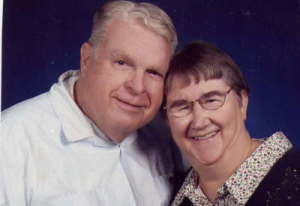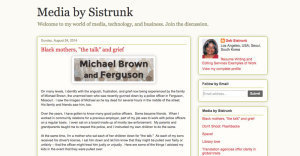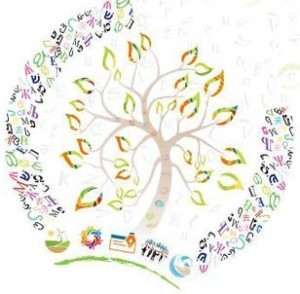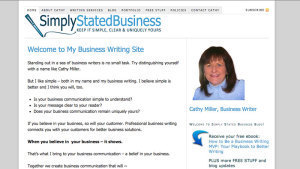Lillie Ammann's Blog, page 95
September 22, 2014
In Memory of Jack
 Two years ago today, my beloved husband Jack went home to be with the Lord. I still miss him every day, but I spend more time enjoying happy memories than crying with grief.
Two years ago today, my beloved husband Jack went home to be with the Lord. I still miss him every day, but I spend more time enjoying happy memories than crying with grief.
I still love sharing his stories—he was a colorful character, for sure. I’ve told stories about him as well as stories he used to tell in Jack Stories: Favorites Memories of Jack Jordan Ammann Jr .
.
September 20, 2014
World Alzheimer’s Day
Today is designated as World Alzheimer’s Day, a day to raise awareness of Alzheimer’s and other forms of dementia. There are many tragic diseases that destroy the body; what makes dementia so tragic is that it destroys the memory and the personality.
I cared for my husband for several years until his death two years ago. I watched him change from a gregarious, outgoing person to a recluse who avoided people and social situations. He lost the ability to do simple, everyday activities, such as make a phone call or answer an email. Instead of showing respect and love, he sometimes exploded in verbal and physical expressions of anger. He didn’t want to shower or change clothes or brush his teeth. On the surface, he was no longer the man I married.
My husband was the second person with dementia I cared for. Along with my mother and two sisters, I was a caregiver for my father for seven years. My grandfather died in the state mental hospital when I was twelve years old because the family couldn’t care for him. Back then, the diagnosis was “hardening of the arteries,” Alzheimer’s wasn’t well-known, but he exhibited the same symptoms of dementia as my father and husband did years later.
You will find a lot of information about dementia here on my blog. Just enter “Alzheimer’s” in the search box. Because I have experienced dementia in people I loved, I want others to be aware of the prevalence, symptoms, and care for Alzheimer’s and other forms of dementia. I have written blog posts about my personal experiences as well as posts with factual information and links to Alzheimer’s organizations and sources of information.
Another thing I have done to help raise awareness is edit a book for my sister, Nancy Nicholson. Help! What Do I Do Now?: Caring for Your Loved One with Alzheimer’s
is an excellent resource for first-time caregivers. Written in an easy-to-read conversational tone, it describes various situations and behaviors that are common, with practical suggestions on how to deal with them. Above all, it encourages caregivers to make this time a positive experience, to find joy in caring for loved ones.
I can say from personal experience that there can be joy in caregiving. Of course, there are frustrations and stresses and tears, but there are also moments of great joy. Sometimes Jack and I would sit quietly on the front porch, and Jack would look at me and say, “We have a good life, don’t we?” I always agreed—and we really did. I was so blessed to be able to care for him at home, to be able to work when he didn’t need my attention and to stop work at any time and give him my full attention. He was so worried that he would forget me, as my father forgot my mother and all his children, but—praise God—that didn’t happen. The following incident was one of those moments of great joy that happened near the end of his life.
About a week before he died, we were in a nursing home while arrangements were made to accommodate his needs at home and to provide constant care since I couldn’t care for him alone. Jack never knew he was in a nursing home—he thought he was still in a hospital. We had a private room, and I stayed in the room with him. One morning I was in the bathroom getting dressed, and I heard him talking to a nurse. She said, “Your wife sure takes good care of you.” He said, “Yes, she does. We both meant it when we said, ‘for better for worse, for richer for poorer, in sickness and in health, to love and to cherish, till death us do part.’” He repeated those exact words at a time when he couldn’t carry on a conversation. He couldn’t remember what happened five minutes before, but he remembered our wedding vows from more than forty-five years ago. ~ excerpted from Jack Stories: Favorite Memories of Jack Jordan Ammann Jr, a collection of stories and anecdotes shared by many friends and family members
September 18, 2014
Web Sites Should Be User-Friendly
Recently, I wrote a blog post about websites that are difficult to read. Today, my associate Jan McClintock, shares helpful advice on making your site user-friendly. Jan works with me on large editing projects, book layout, and ebook creation. She also creates and maintains websites for my clients.
We’ve all seen those crazy busy web sites with glaring colors, teeny text, and moving objects. I avoid them like the plague. The goal of any web designer should be to make the site easy and enjoyable to use. Let me show you some examples.
Part of UX (user experience design) and usability (user-centered design) is the look of the site, of course. This article will focus on the appearance and accessibility.
It would be heaven online if every site included the following items. A good example of each concept is added.
Accessibility
Easy, clear navigation—If the visitor doesn’t know what’s on the site or where to go to find what they want, they end up stumbling around and getting frustrated. That’s not much of a welcome.
Writer’s Digest
Consistency across the entire site—People need familiarity and the site should act the way they expect. This is equally important for branding: keep it obvious that this is your site.
Simply Stated Business
Larger buttons—Eye-hand coordination isn’t the same for everyone. Let’s face it: the older we get, the larger a target needs to be.
Barbara D’Amato
Visible links—You went to the trouble to add a useful link to your page; shouldn’t you make it obvious that it’s there? Links should at least be a contrasting color and/or perhaps underlined.
Will Write For Chocolate
Search feature—Allow your visitors to easily find what they need on your site.
FeedBooks
No animations—I seriously dislike blinking or moving ads, especially with video. They distract me from what I want to read. That’s obviously the point, isn’t it? But you can choose to please your visitors and keep the tone down.
Text
Larger type—Obviously, having to squint or zoom the page to be able to read it is not fun. Visitors should be able to read your text directly as placed.
Robin Lee Hatcher
Limit the use of fonts—Too many diffent kinds of type is not good—it’s confusing and busy. Stick with two (or maybe three) typefaces; use one for the headers and one for the body text.
Media by Sistrunk
Text and background color—White text on a dark background is hard to read; the light in the text scatters throughout the paragraph, making it much more difficult to focus. On the other hand, black text on a bright white background gets the reflection from the background. The best solution is black or dark gray text on a light but neutral background that has some gray in it.
Diana Lesire Brandmeyer
Clear headers—Headers are the titles for sections of the site or page. They tell you where you are and help you choose things. They should be clearly named and prominently displayed.
Freelance Folder
Break up long blocks of text into smaller paragraphs. Your visitor has a limited attention span and most people don’t enjoy reading long sections of text.
Words on the Page
Color and Layout
Add Contrast—This is again about being able to read without squinting or getting a headache. Text that blurs into the background is a big no-no.
Coffee House for Writers
White space—There’s little I hate more than having to search for the main story on a web page. Don’t cram everything on the page. Leave plenty of white space.
Daily Writing Tips
Sites that have it all together
Stella Cameron
Sheldon Jacobs
Gail Whitiker
Kathy Carmichael
Dr Jeff Cornwall’s The Entrepreneurial Mind
That Bookkeeper
Joe Abercrombie
Thomas Richard Harry
Does your site pass the test? What else do you like or dislike about these sites?
by Jan McClintock, Night Owl Sites
September 16, 2014
God, I’ve Got a Problem, Part 1, by Ben Ferguson
Note from Lillie: I interviewed Ben Ferguson about his work with Adopt-A-Chaplain four years ago. I failed to post about his book when it came out last year. To make up for that oversight, I’ve invited Ben to share the story of his book. Here is the first installment; Part 2 will appear next week.
===========
THE BACK STORY
Behind every book is a story explaining why authors subject themselves to the rigors of getting their thoughts on paper and ultimately in print.
The backstory for this book begins in 1966 when I graduated from Dallas Seminary with a Master of Theology degree, all the answers, and very few questions! Soon after arriving at my first church I discovered seminary answers weren’t answering the practical questions people were asking, so I began a journey learning to apply Biblical truth and principles to the problems people face every day. Lessons this young pastor and his congregation learned together form the framework for writing.
A PRINCIPLED APPROACH
Dr. Mouat, one of my college speech professors, observed, “The mind can only comprehend what the seat can stand.” As I begin my research I discovered authors devoted an entire volume to solve a problem for everyone, but by the end of the book I was left with information overload and still searching for an answer that worked for me.
Alexandra Trenfor said, “The best teachers are those who tell you where to look but don’t tell you what to see.” I may not be the best teacher, but I agree it’s better to tell people where to look for answers rather than to give my answers. Simple is better, so each chapter of the book can be read in one sitting and addresses one problem, providing a resource that engages the reader in a process of discovery and finding the solution that works for them. If you’re looking for a book to solve problems for you, this book isn’t it, but if you want a guide for solving your problems, this is for you. Each chapter:
Defines a problem,
Describes and illustrates how it looks, smells, and feels in daily life,
Outlines Biblical principles or tools to use in addressing the problem, and,
Leaves a plan of action to follow as we wrestle with daily problems.
A TITLE THAT WORKS
Choosing the title for a book is almost as important as the writing. A good title catches a potential reader’s attention, inviting them to pick it up for a look, and gives some insight into what a reader will find inside. A brief look inside this book lets a reader know it’s not about growing tomatoes but about God’s answers to life’s problems.
After relating a particularly difficult problem he was facing, a man asked: “Does God have an answer for me?” Over the next several months we explored his question together and discovered God did have an answer for his problem. You may not have verbalized the question like that, but I’ve discovered it’s just beneath the surface when problems invite themselves into our life, so God, I’ve Got a Problem seems the logical choice.
The first edition made it into print in 1974 and had a good run, staying in print for twenty years. When it went out of print, I gave no thought to engaging in the process or rewriting and updating the book until 2005 after God led three men to begin Adopt-a-Chaplain, a ministry to chaplains deployed in combat zones.
========
Be sure to return next week for Part 2 of Ben’s story.
September 14, 2014
Remembrance for Aborted Babies
 The National Day of Remembrance for Aborted Babies took place this past weekend. Pro-life groups held memorial services at gravesites of aborted babies as reminders that these unborn children are human beings created by God in His image.
The National Day of Remembrance for Aborted Babies took place this past weekend. Pro-life groups held memorial services at gravesites of aborted babies as reminders that these unborn children are human beings created by God in His image.
Heavenly Father, have mercy on the souls of the millions of babies who have been aborted. Open the eyes of the mothers and fathers and legislators and citizens of this country to the sanctity of human life and end the slaughter of innocent children. In the name of Jesus Christ, our Lord and Savior. Amen.
Image: © Depositphotos.com/Buurserstraat38
September 11, 2014
Patriot Day: A Day of Service and Remembrance
 Today is a Day of Service and Remembrance for the events of September 11, 2001. Although it’s been thirteen years since the attack that took nearly 3,000 lives, we all remember where we were and what we were doing when we heard the news.
Today is a Day of Service and Remembrance for the events of September 11, 2001. Although it’s been thirteen years since the attack that took nearly 3,000 lives, we all remember where we were and what we were doing when we heard the news.
Let us remember the victims—those who were killed, injured, or traumatized and those who love them.
Let us also remember that we still face fanatical enemies—terrorists who behead children, persecute and kill Christians, and believe it is their religious duty to kill infidels. We were comfortable and complacent on 9/11—we cannot allow ourselves to be comfortable and complacent today.
ALMIGHTY God, our heavenly Father, in whose hands are the living and the dead; We remember all those who lost their lives on 9/11. Grant to them thy mercy and the light of thy presence, that the good work which thou hast begun in them may be perfected. Bless those who lost their health, their security, or their loved ones on that day, and give them thy peace that passes understanding. Save and deliver us, we humbly beseech thee, from the hands of our enemies; that we, being armed with thy defence, may be preserved evermore from all perils, to glorify thee, who art the only giver of all victory; through the merits of thy Son, Jesus Christ our Lord. Amen
Image: © Depositphotos.com/Mishella
September 8, 2014
International Literacy Day 2014
 Today is International Literacy Day. Find interesting statistics on world-wide illiteracy and benefits of literacy on this infographic on the UNESCO website.
Today is International Literacy Day. Find interesting statistics on world-wide illiteracy and benefits of literacy on this infographic on the UNESCO website.
Of course as a writer and avid reader, I want everyone to be able to enjoy the pleasure of reading.
But, more importantly, increased literacy reduces poverty and infant mortality. People who are illiterate are less likely to participate in the political process, giving power over their lives to others.
Among those who are not literate, more than 60% are women. Women who become literate have a powerful impact in spreading literacy in their families and communities.
ALMIGHTY God, we beseech thee, with thy gracious favour that literacy may be increased among us, and all good learning flourish and abound. Bless all who teach and all who learn; and grant that in humility of heart they may ever look unto thee, who art the fountain of all wisdom; through Jesus Christ our Lord. Amen. ~ adapted from the 1928 Book of Common Prayer
September 4, 2014
Why Is Your Website So Hard to Read?

I know website owners struggle to get attention among millions of sites on the Internet. And I’m sure they are doing what they think is the best way to attract and keep visitors.
However, for many people a red background with tiny font or a white background with pale text just isn’t readable if we have even minor vision problems. I’m disappointed when I come across a blog or an article I want to read, then discover it”s just not worth the effort it takes to decipher it.
Now, you may think you don’t mind losing a few visually-impaired readers to have your great-looking website. Or you may think that the vision issues of individuals searching the Internet is their problem, not yours.
But there two things to consider:
1) More prospective customers, readers, followers, or fans than you realize may find it difficult to read your page. Even if they are far from blind, many people have difficulty reading webpages that are cluttered with busy elements (complicated menus, videos that start automatically, lots of graphics, and pop-up ads) and pages with low contrast (dark text on a black background or pale text on a white background). You may be losing more people than you know.
2) Even people with normal vision may prefer simpler, easier-to-read pages. They can fight through all the clutter to the text, but they prefer not to. They would rather look for the information on a site that is less challenging to read and navigate.
So, it’s up to you to make your site appealing to a wide range of tastes and abilities. In two weeks, my associate, Jan McClintock, will share some advice on how to do that.
Image: © Depositphotos.com/cobal88
September 1, 2014
Happy Labor Day
 Wishing you a wonderful day free of labor and filled with love, joy, and peace.
Wishing you a wonderful day free of labor and filled with love, joy, and peace.
ALMIGHTY God, our heavenly Father, who declarest thy glory and showest forth thy handiwork in the heavens and in the earth; Deliver us, we beseech thee, in our several callings, from the service of mammon, that we may do the work which thou givest us to do, in truth, in beauty, and in righteousness, with singleness of heart as thy servants, and to the benefit of our fellow men; for the sake of him who came among us as one that serveth, thy Son Jesus Christ our Lord. Amen.
Image: © Depositphotos.com/Sarunyu-foto
August 23, 2014
New Facebook Page
 I’ve set up a new Facebook page – Lillie Ammann, Writer. I’d love it if you “like” my page!
I’ve set up a new Facebook page – Lillie Ammann, Writer. I’d love it if you “like” my page!





